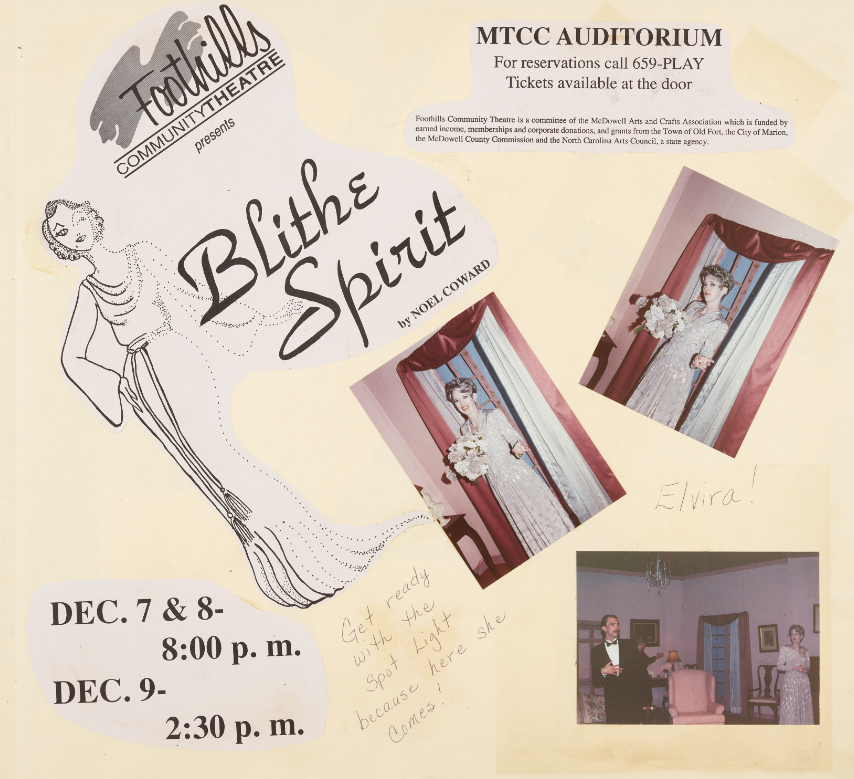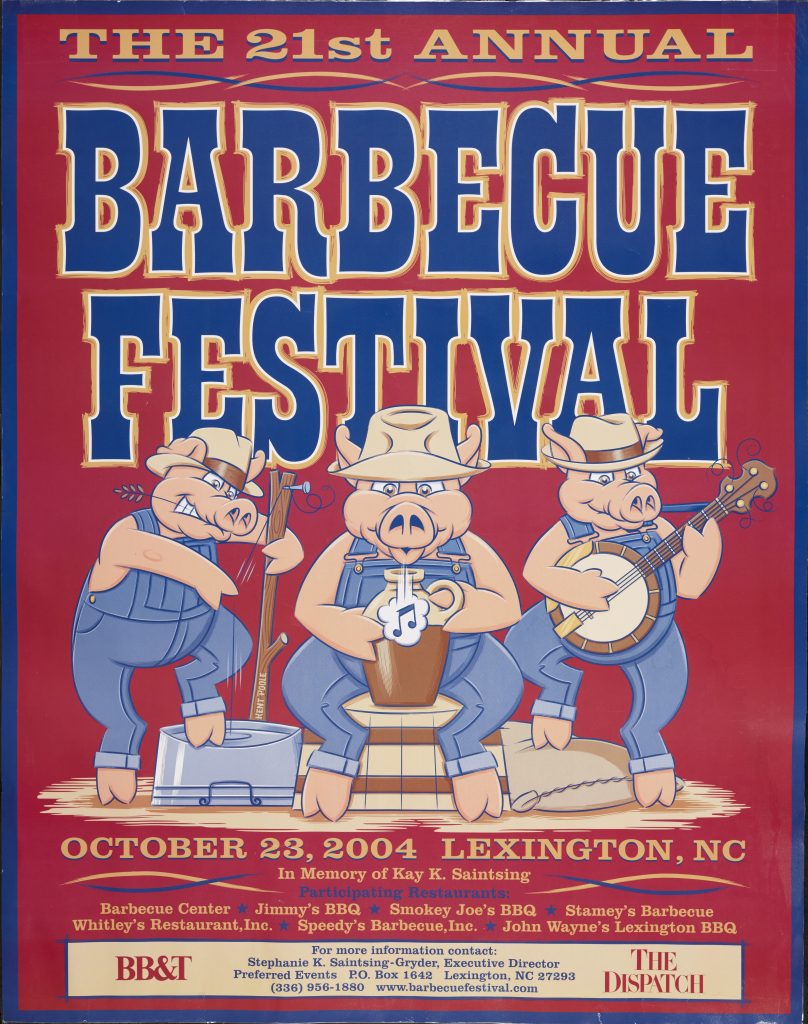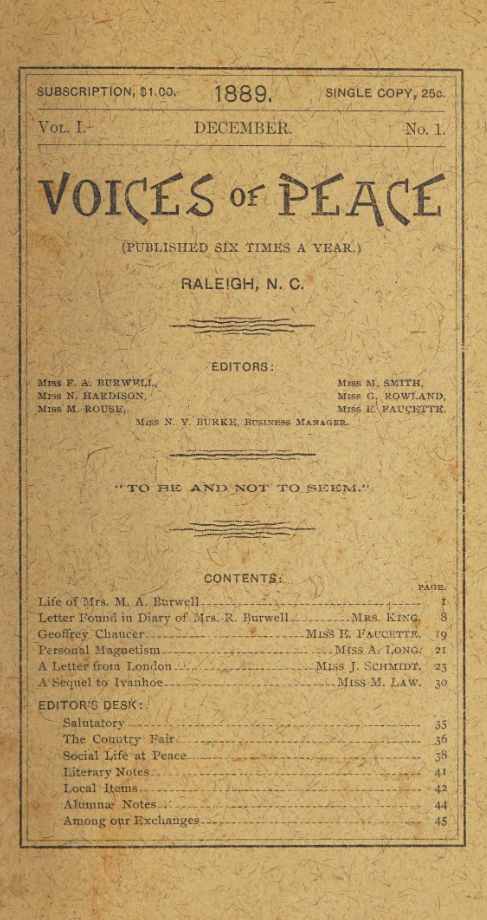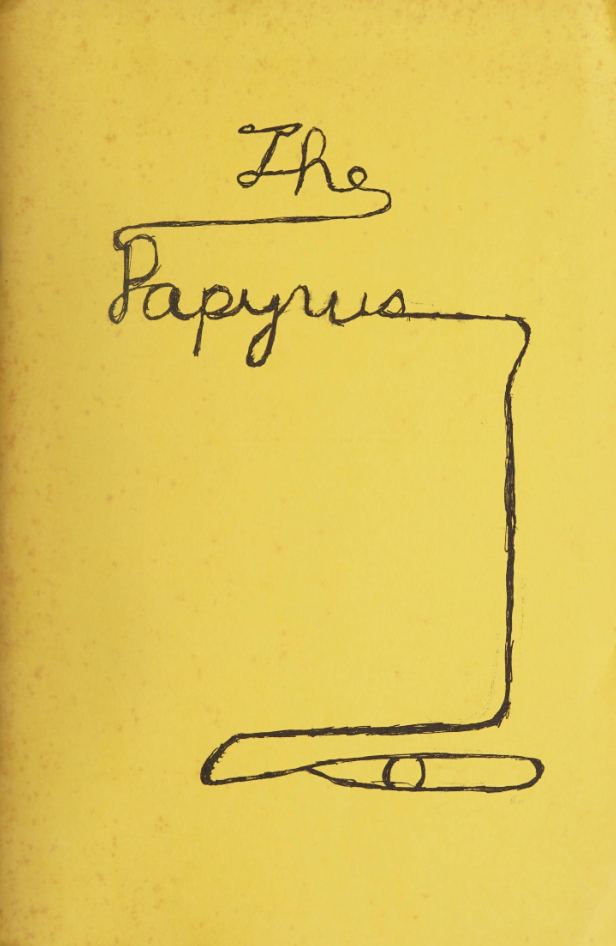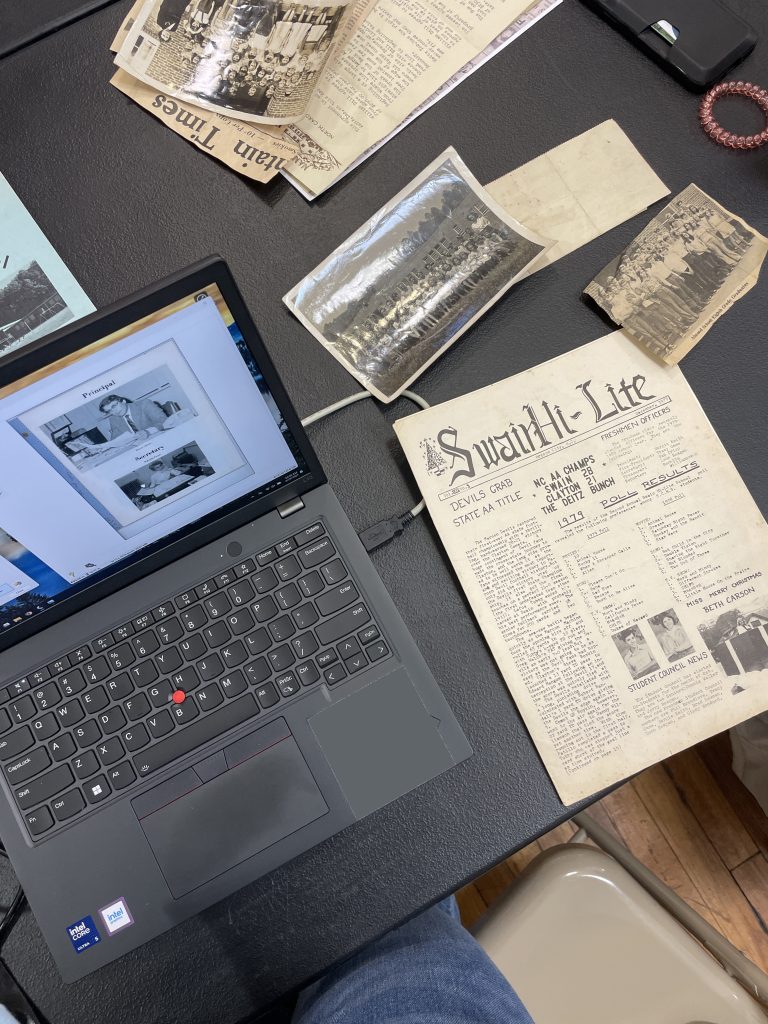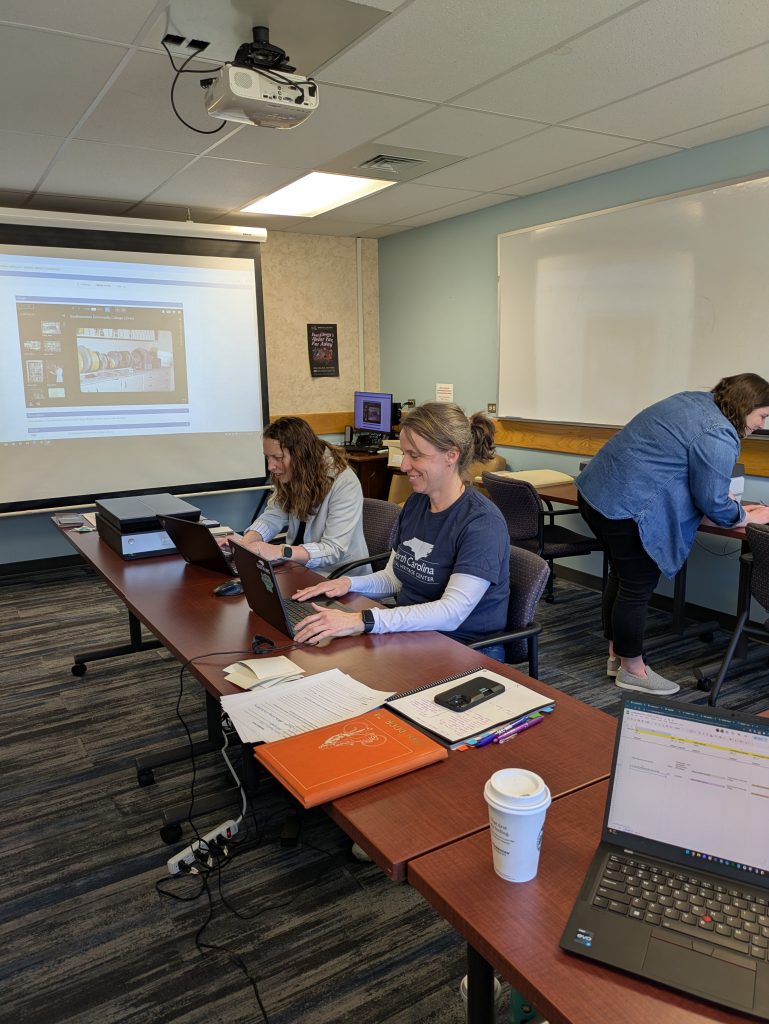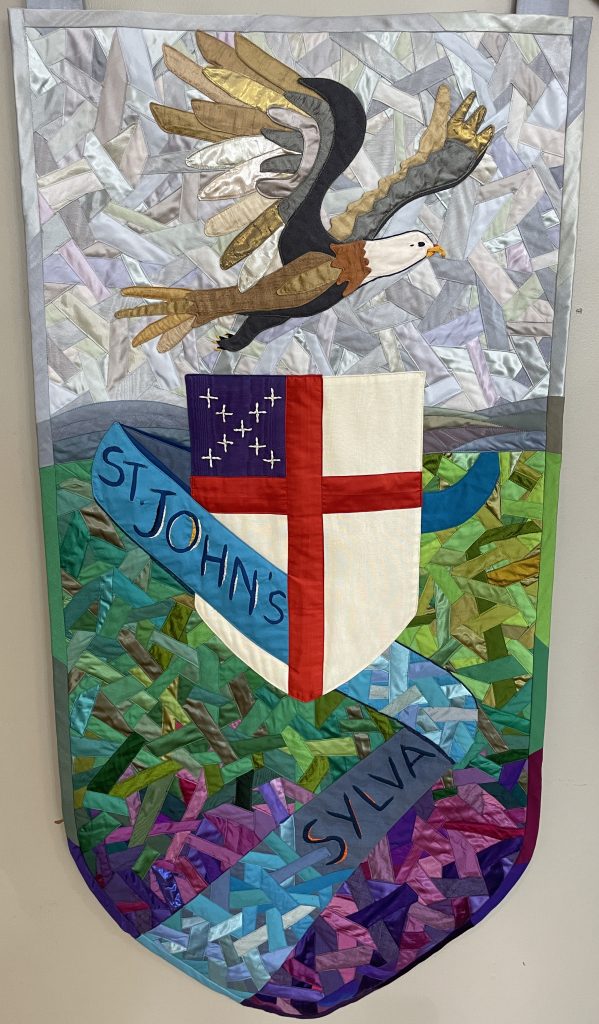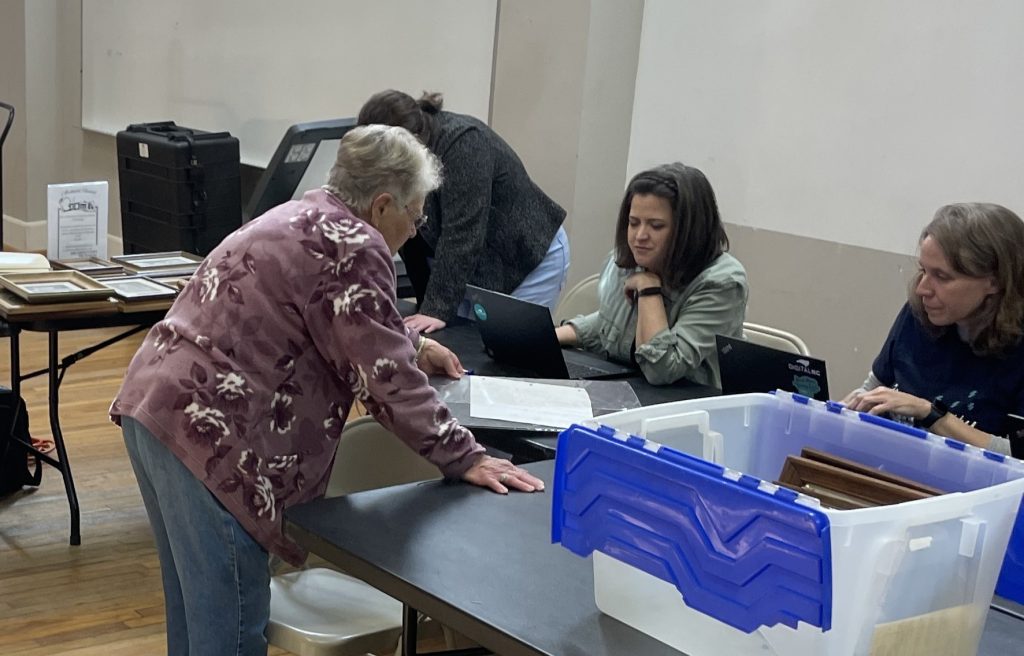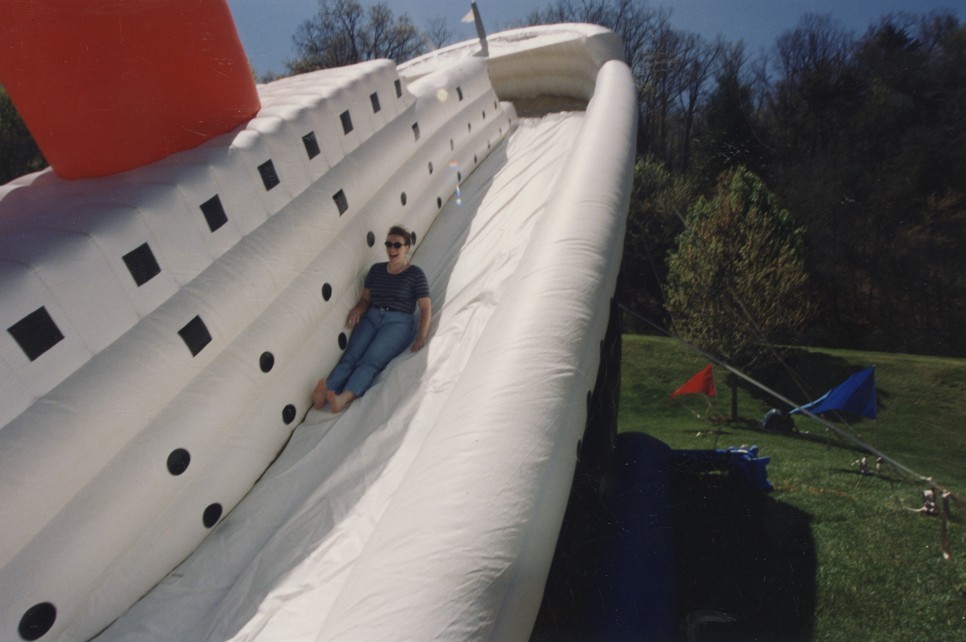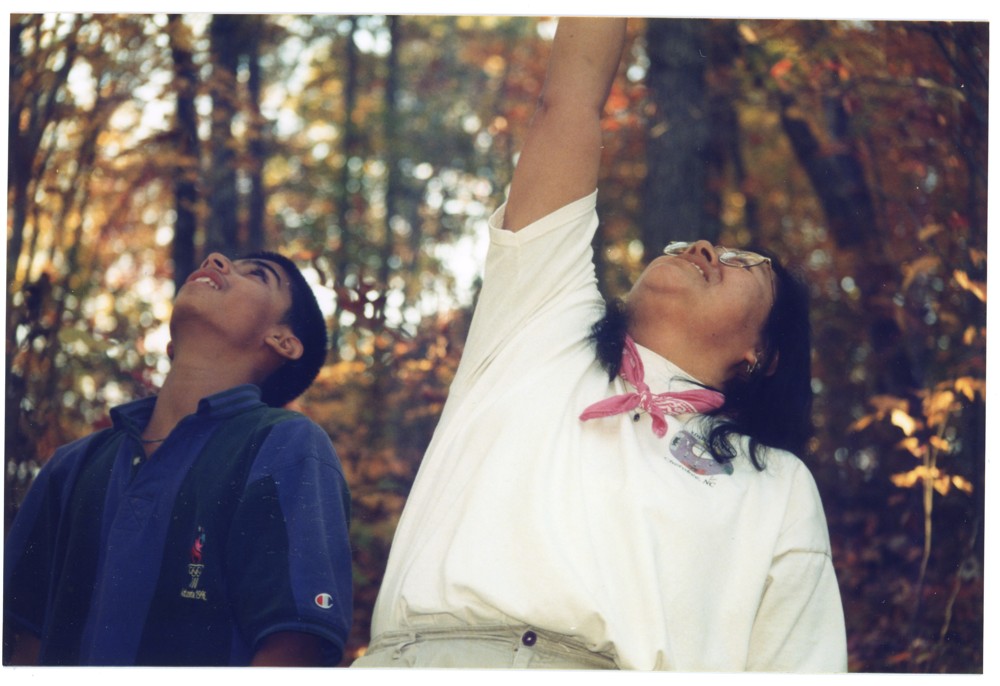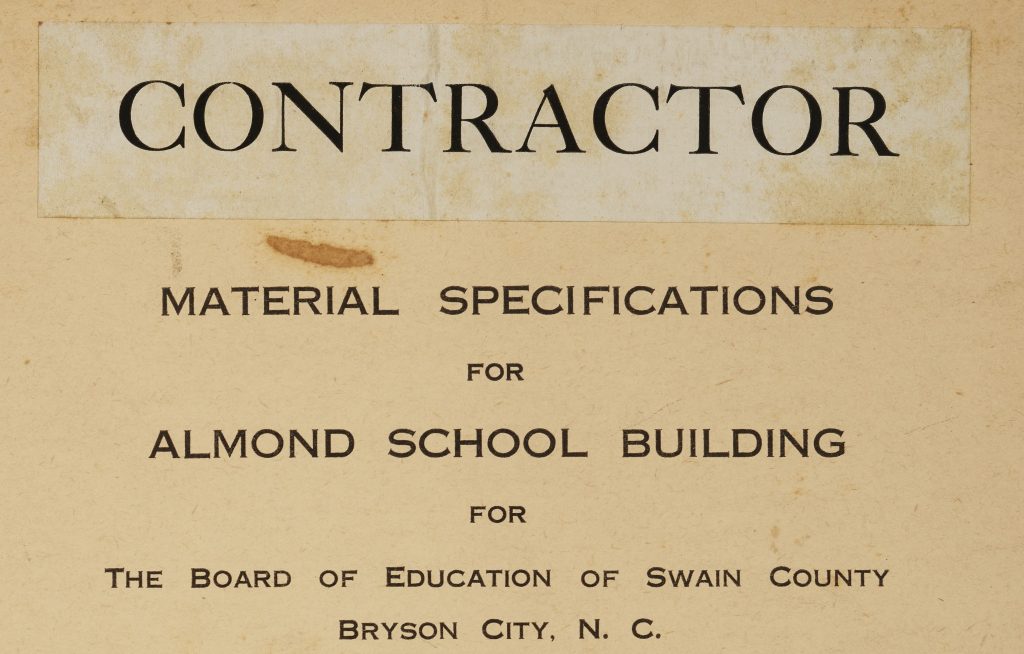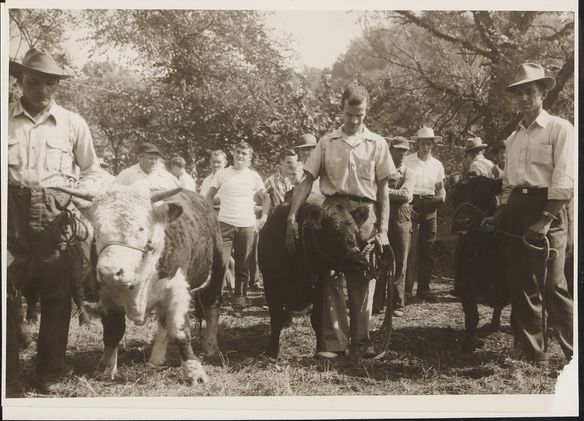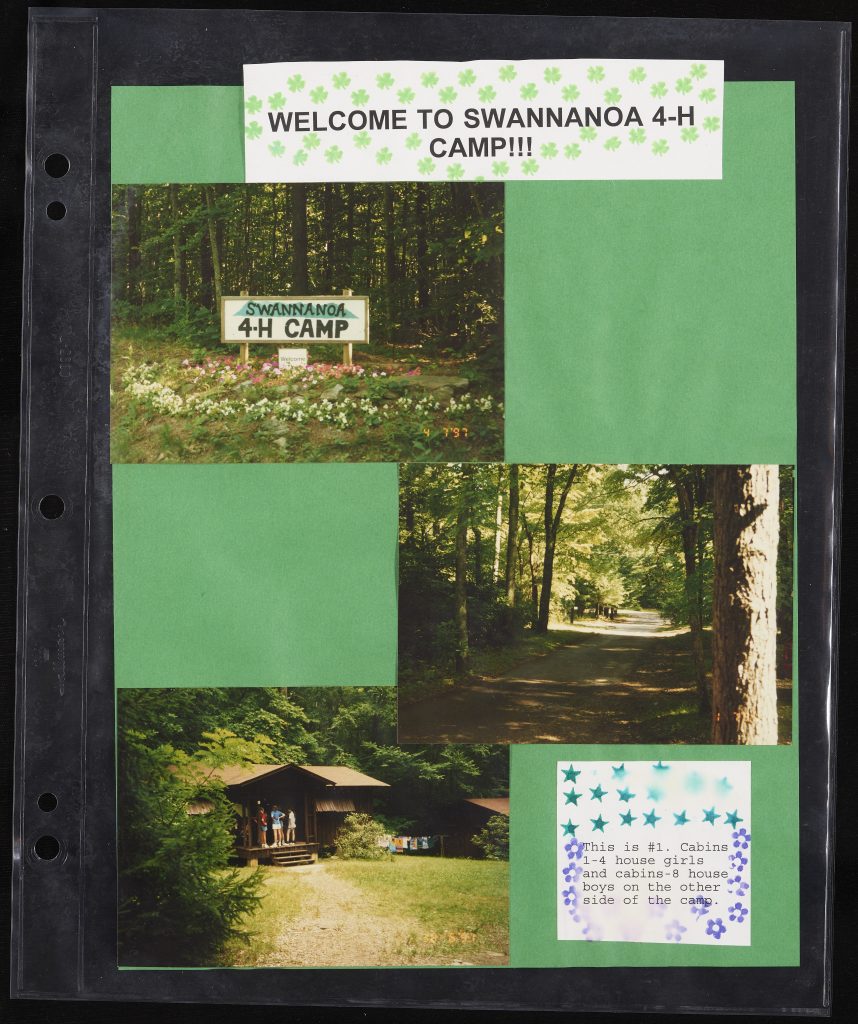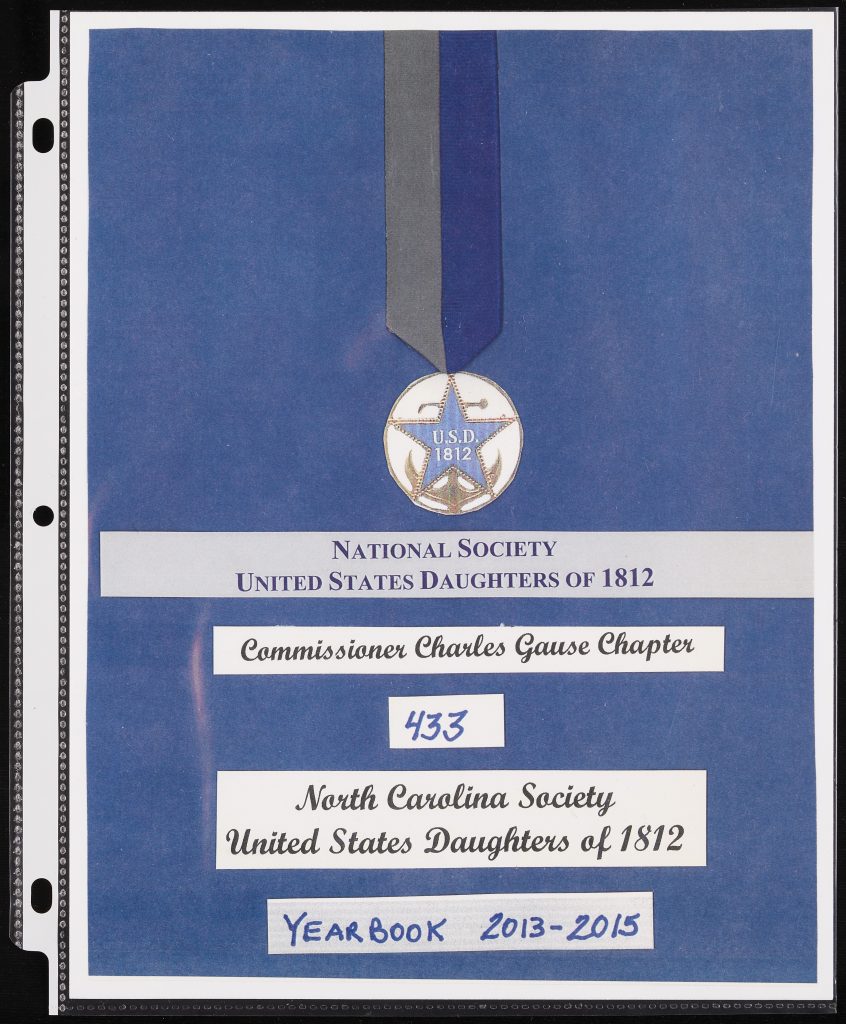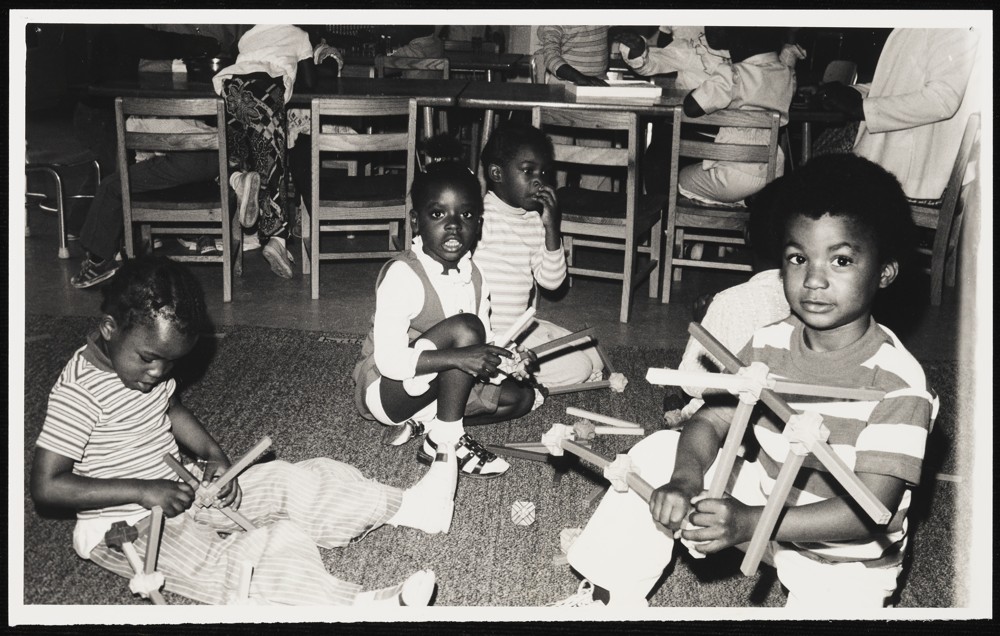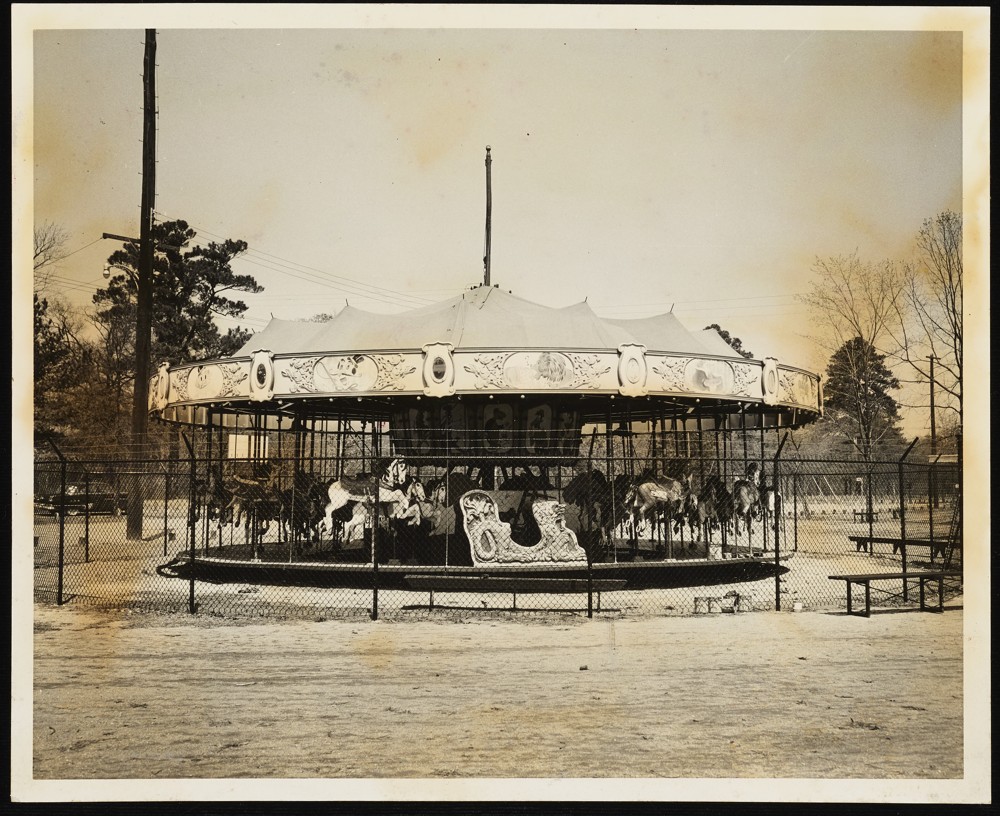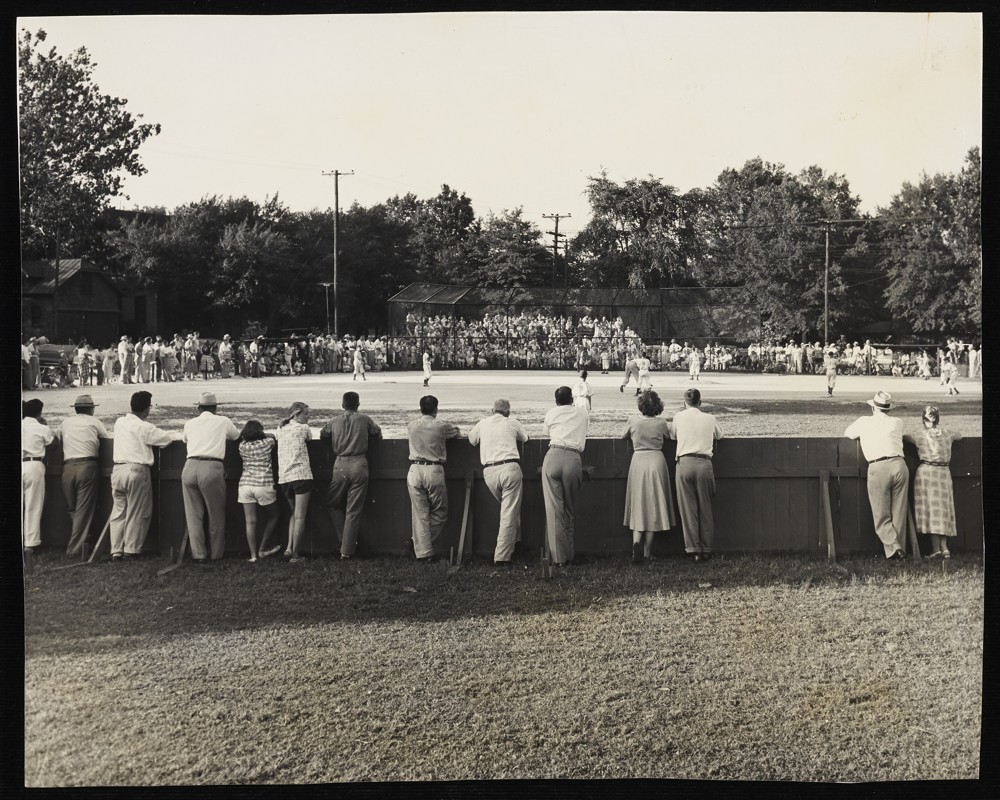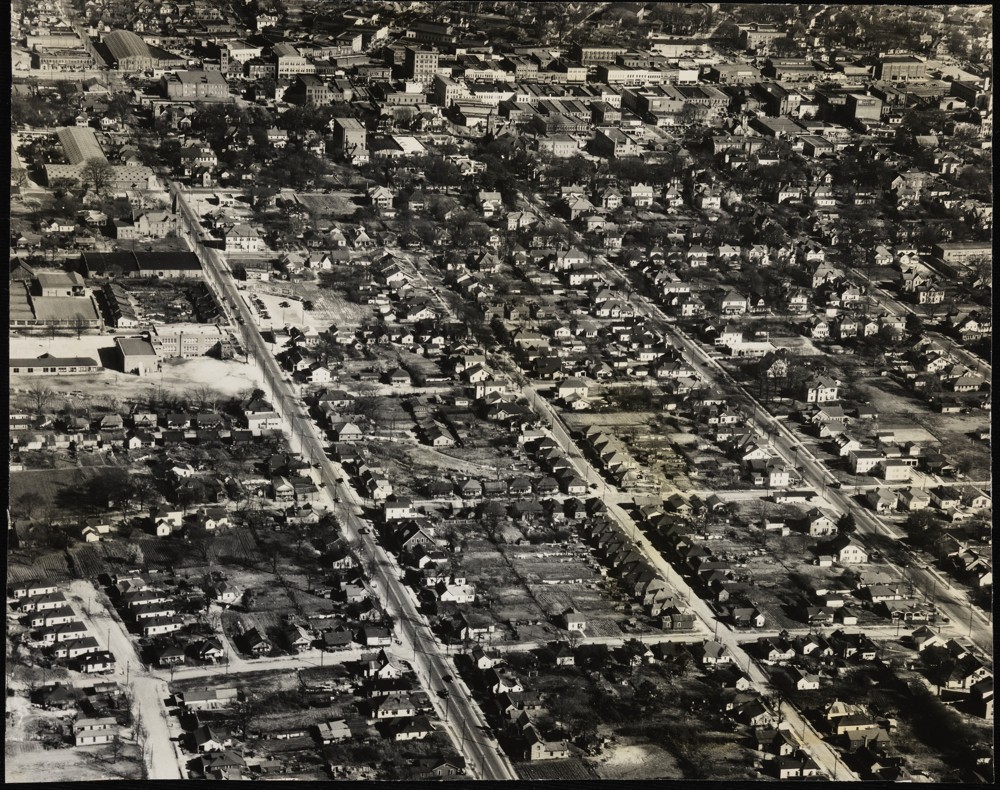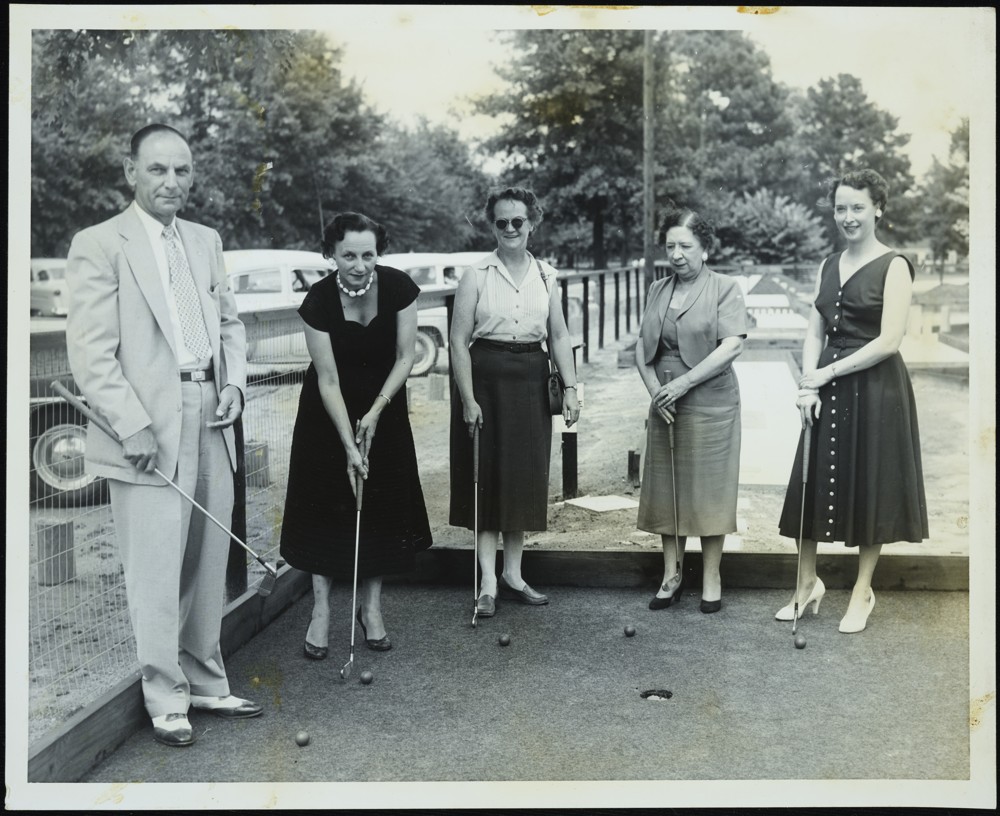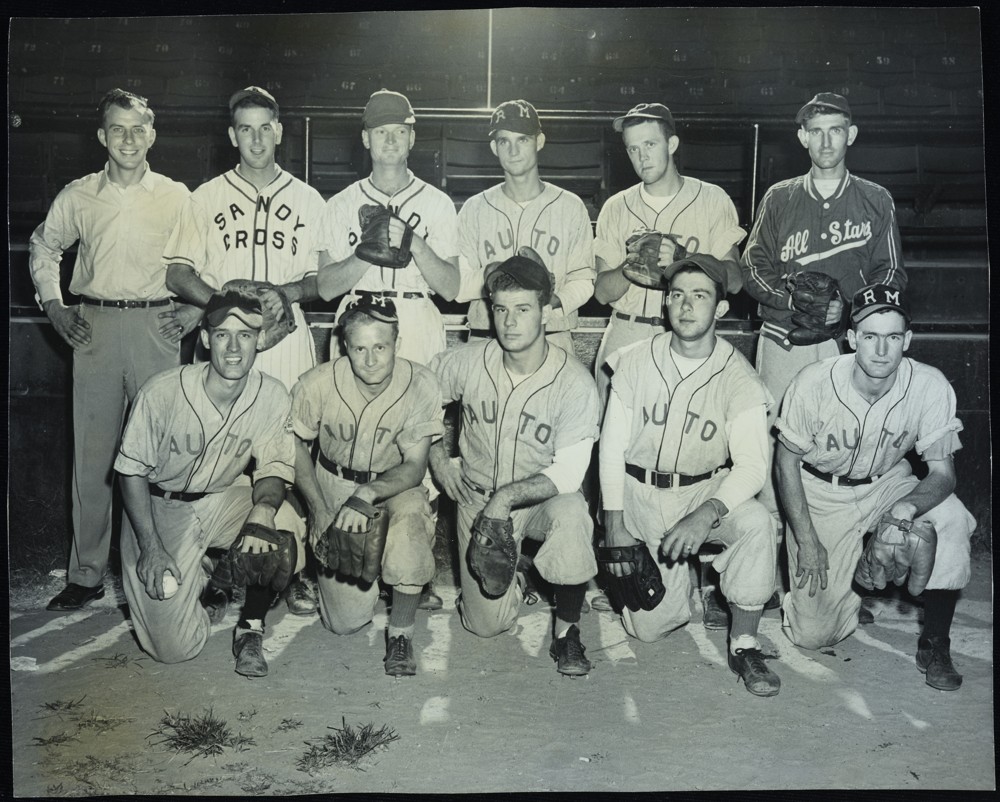With the help of our partners at McDowell Arts Council Association, we are excited to announce the addition of new materials related to the culture and arts of McDowell County, North Carolina. McDowell Arts Council Association, also known as MACA, has been a pillar of the community since 1972, and its materials document over half a century of artistic involvement and expression in the county.
Foothills Community Theatre, the performing arts center in Marion, North Carolina that was started alongside MACA in 1972, is the subject of three scrapbooks and two photograph albums from this batch of materials. DigitalNC visitors can browse the Foothills Scrapbooks for ephemera, publications, and press related to Foothills Community Theatre productions from 1980 to 1996. Visitors can also find photographs from several later productions in the two photograph albums Voices [1993]. Alongside these materials, another scrapbook includes general McDowell Arts Council Association activities from 1987 to 1996.
This latest batch is completed with three booklets that chronicle a more recent endeavor of the McDowell Arts Council Association called the McDowell Quilt Trail. Started in 2009 with inspiration from the Quilt Trail of Western North Carolina, the McDowell Quilt Trail project helped bring hundreds of painted wooden quilt squares to the barns, houses, garages, and public buildings of McDowell County. The project was retired in 2018 when over the course of nearly 10 years, 230 quilt squares had been successfully built, painted, and displayed across the county.
More information about our partner, McDowell Arts Council Association, can be found on their website here.
More materials, including scrapbooks, magazines, poetry and literary booklets, and photographs can be found on McDowell Arts Council Association’s contributor page, which is linked here.
